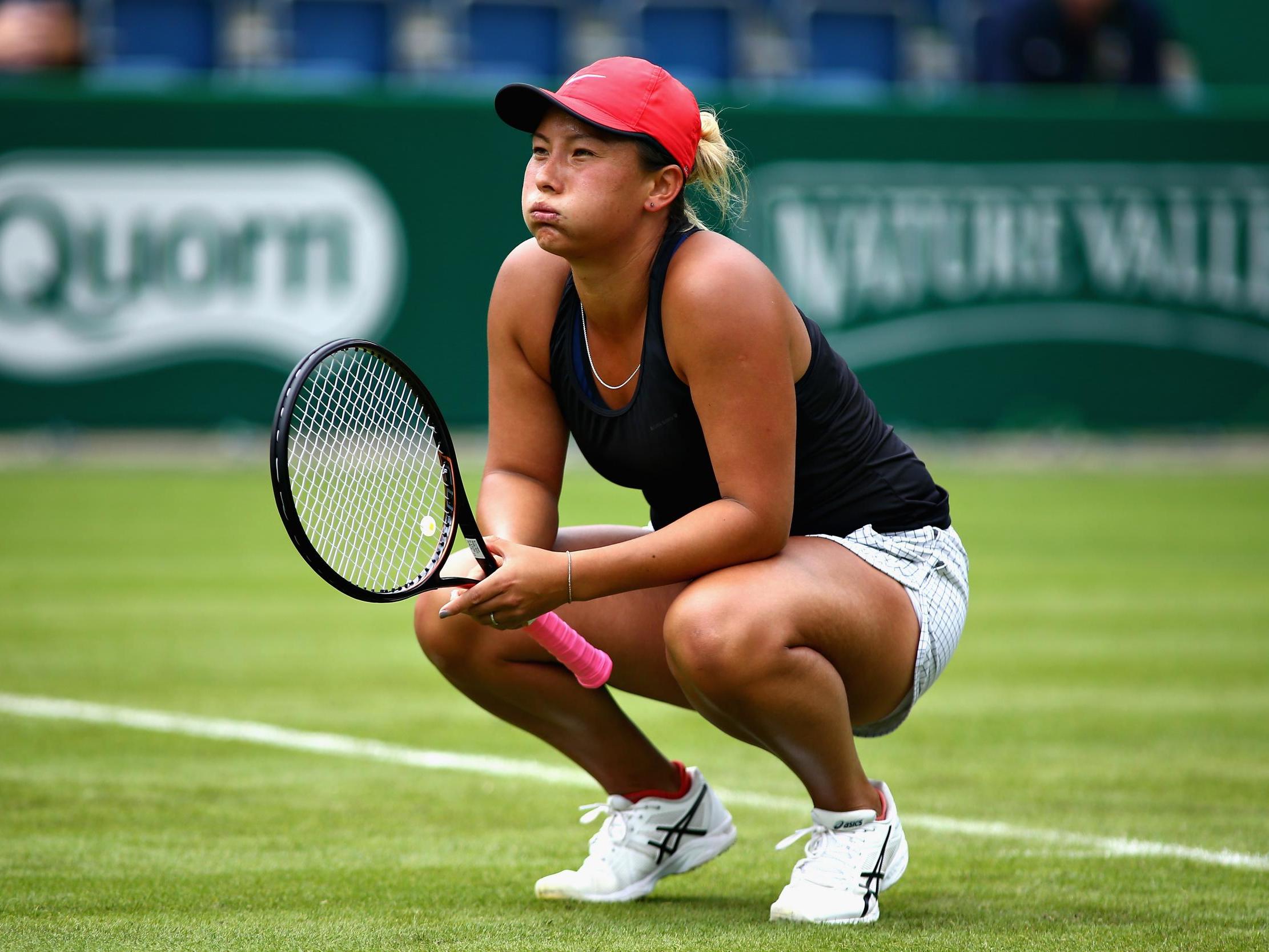A scalpel, a spray and a skin condition: how Jannik Sinner explained doping contamination
Timeline: Sinner, the men’s No 1-ranked player, twice tested positive for the banned substance clostebol but successfully argued he had been inadvertently contaminated by his physiotherapist
Your support helps us to tell the story
From reproductive rights to climate change to Big Tech, The Independent is on the ground when the story is developing. Whether it's investigating the financials of Elon Musk's pro-Trump PAC or producing our latest documentary, 'The A Word', which shines a light on the American women fighting for reproductive rights, we know how important it is to parse out the facts from the messaging.
At such a critical moment in US history, we need reporters on the ground. Your donation allows us to keep sending journalists to speak to both sides of the story.
The Independent is trusted by Americans across the entire political spectrum. And unlike many other quality news outlets, we choose not to lock Americans out of our reporting and analysis with paywalls. We believe quality journalism should be available to everyone, paid for by those who can afford it.
Your support makes all the difference.Jannik Sinner has finally brought an end to his doping saga by accepting a three-month ban offered by the World Anti-Doping Agency.
The 23-year-old, who is the men’s No 1-ranked tennis player and won the Australian Open in January, twice tested positive for a banned anabolic steroid last year.
It’s a case that no one knew about for months and one that drew all sorts of questions and criticism from other players who wondered whether there was a double standard at play because of Sinner’s success, were confused about why it was all kept under wraps, and wanted to know why Sinner was allowed to keep competing before there was a resolution.
“This case had been hanging over me for nearly a year and the process still had a long time to run with a decision maybe only at the end of the year,” Sinner said in a statement.
“I have always accepted that I am responsible for my team and realise Wada’s strict rules are an important protection for the sport I love. On that basis I have accepted Wada’s offer to resolve these proceedings on the basis of a three-month sanction.”

What is clostebol, the drug Sinner tested positive for?
Clostebol is an anabolic steroid that can be found in ointments and sprays sold over the counter in some countries, such as Italy, and is used to treat cuts or scrapes.
It is considered a performance enhancer, and several athletes in various sports have been suspended after testing positive; one high-profile example was baseball star Fernando Tatis Jr, who received an 80-game ban from Major League Baseball in 2022.
Sinner submitted a urine sample showing traces of clostebol during the Indian Wells tournament in California in March; an out-of-competition sample eight days later also tested positive.
How did Sinner explain away the positive test results?
Sinner’s lawyers said that his fitness trainer purchased a spray “easily available over the counter in any Italian pharmacy” which was given to the player’s physiotherapist, Giocomo Naldi to help treat a minor cut on the physio’s finger. Naldi regularly massaged Sinner during the Indian Wells tournament, without wearing gloves.
Sinner’s lawyers claimed that because the player had “various skin lesions” on his body due to a skin condition called psoriasiform dermatitis, the spray – which contained clostebol – must have passed from the physio’s hands through to Sinner and caused the “inadvertent contamination”.
Timeline according to independent tribunal report
12 February 2024: Sinner’s fitness coach, Umberto Ferrara, buys a spray used on cuts, branded Trofodermin, in a pharmacy in Bologna, Italy.
3 March: Physiotherapist Naldi cuts the little finger on his left hand while reaching into his treatment bag, nicking it on the scalpel he uses to treat calluses on players’ feet. He bandages the cut for two days. Witnesses provide discrepancies on exactly where and when the cut occurred but agree it was caused by the scalpel in the bag on 3 March.
Later that evening, Sinner asks about the bandaged finger during a session with Naldi. Naldi explains the cut and says that he has not treated it with anything.
5 March: Naldi removes his bandage and Ferrara recommends he use the Trofodermin spray for its healing qualities. Naldi does not check the contents, which include the banned substance clostebol. Naldi applies the substance to the small wound on his finger every morning for nine days, in the ensuite bathroom in the villa where they are staying in California.
5-13 March: Naldi gives Sinner a daily full-body massage using oils, and without wearing gloves, lasting an hour to an hour and a half. Naldi also performs foot exercises to assist with an ankle injury. The times of day vary.
10 March: Naldi applies two sprays of Trofodermin to his finger in the morning. He treats Sinner’s feet and ankle, where the player’s skin condition – psoriasiform dermatitis – has previously caused itching, leading to scratching and small cuts and sores. Naldi cannot remember if he washed his hands between applying spray to his finger and massaging Sinner.
That evening, after beating German player Jan-Lennard Struff in straight sets, Sinner submits two urine samples (primary and corroborative) at Indian Wells, which both test positive for clostebol.
16 March: Sinner is beaten by Carlos Alcaraz in the semi-finals of Indian Wells.
18 March: Another urine sample provided by Sinner, ahead of the Miami Open, tests positive for clostebol.
4 April: Sinner is formally notified of an adverse analytical finding (AAF) and the automatic provisional suspension is triggered. Sinner responds – on the same day – with an urgent application for the suspension to be lifted. His provisional ban is lifted the next day.
17 April: Sinner is notified of the second AAF. He responds with another urgent application for the automatic provisional ban to be lifted, and his application is upheld.
30 May: The International Tennis Integrity Agency (ITIA) charges Sinner with anti-doping rule violations.
19 June: Sinner’s legal team submits detailed explanations of the AAF.
20 August: ITIA reveals the case and its findings, announcing Sinner has been cleared of wrongdoing.
Why was Sinner allowed to continue competing?
Sinner was provisionally suspended for the two positive results but he appealed against those bans, saying that he was inadvertently exposed to the steroid.
Sinner’s appeal was submitted on the same day he was formally notified of the first adverse analytical finding (AAF), complete with a laboratory statement and written submissions from his support team. It is unclear whether he was given advanced warning of the AAF before being formally notified.
The ITIA, which handles anti-doping and anti-corruption investigations for the sport, accepted his explanation. The ITIA said it conducted a “thorough investigation” involving “multiple in-depth interviews” with Sinner and his support team. The ITIA’s investigators conducted 10 interviews in total and sought the expertise of three anti-doping experts.
It then passed the case to an independent tribunal to review the details of the case. A hearing was convened at Sport Resolutions on 15 August, which found that Sinner was not negligent and not at fault.
The independent tribunal consulted three scientific experts, including Professor David Cowan of King’s College London, the former head of the KCL’s Wada [World Anti-Doping Agency]-accredited lab. All three experts concluded that Sinner’s explanation was plausible.
They noted that Sinner tested for only small concentrations of clostebol. On 10 March, he tested for 121pg/mL of the substance, and on 18 March he tested for 122pg/mL. The Trofodermin spray contained 5mg/mL of clostebol acetate.
Professor Cowan said: “Even if the administration had been intentional, the minute amounts likely to have been administered would not have had ... any relevant doping, or performance-enhancing, effect upon the player.”

Was he initially punished?
Because one of the positive tests came during a tournament, Sinner had to forfeit $325,000 in prize money and 400 ranking points he earned by getting to the semi-finals at Indian Wells. But he was not handed any ban.
What happened next?
Sinner hoped that would be that, but Wada was not happy with the ITIA’s ruling, and appealed against the decision for Sinner to escape sanction to the Court Arbitration for Sport, saying that even though Sinner had inadvertently been contaminated, he must take responsibility for his team’s actions.
In order to avoid a protracted legal battle, Sinner accepted an offer from Wada of a three-month ban.
What did other players think about Sinner’s case?
Plenty of players hopped on social media to offer their takes on the latest high-profile doping case in tennis, a list that includes suspensions reduced on appeal for grand slam champions Maria Sharapova and Simona Halep.
Nick Kyrgios, the Wimbledon runner-up in 2022, called the situation “ridiculous” and said he thought a ban was warranted.
Tennys Sandgren, a two-time quarter-finalist at the Australian Open, said Sinner’s explanation for how the steroid got into his system “does seem pretty plausible” but added: “How this was handled really doesn’t seem fair compared to other players whatsoever.”
There also were those who noted that both Jenson Brooksby and Mikael Ymer were suspended for missing tests, as was Britain’s Tara Moore. The 19-month suspension effectively destroyed Moore’s career.
“I guess only the top players’ images matter,” Moore wrote on social media. “I guess only the independent tribunal’s opinion on the top players is taken as sound and right. Yet, they question them in my case. Just makes no sense.”
Chris Evert, the 18-time grand slam champion and ESPN analyst, said: “I do think that they protect top players. By ‘protecting’ – they’re going to keep the secret for a couple of months. They’re going to keep certain things secret if you’re a top player because they don’t want the press, the player doesn’t want the press. It’s all going to come out in three months, anyway.”

Could there be another twist?
No, that should now be the end of the case. Wada has withdrawn its appeal to the Court of Abritration for Sport.
Join our commenting forum
Join thought-provoking conversations, follow other Independent readers and see their replies
Comments